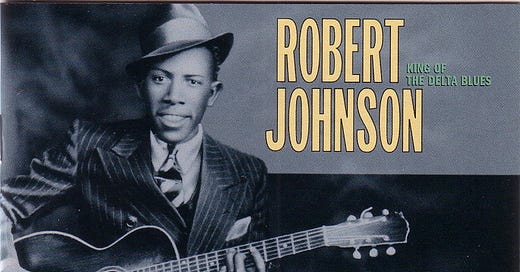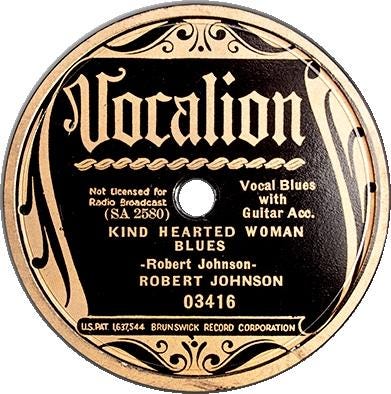Robert Johnson’s Best Day in the Studio
His Discovery, Journey to San Antonio, and November 23, 1936, Session
If Robert Johnson hadn’t recorded another note after his first day of sessions, chances are he’d still hold an exalted place in blues history. Four of the songs recorded on November 23, 1936 – “I Believe I’ll Dust My Broom,” “Sweet Home Chicago,” “Ramblin’ On My Mind,” and “Come On in My Kitchen” – were destined to become blues standards. On these recordings, Johnson simultaneously conveyed the essence of earlier Mississippi Delta blues and forecast the future of electric blues, R&B, and rock and roll. His extraordinary skills as a singer, guitarist, songwriter, and arranger would inspire generations of musicians.
Johnson’s debut sessions were arranged by H.C. Speir, owner of Speir’s Music Store at 111 N. Farish Street in Jackson, Mississippi. Over the years, Speir had auditioned dozens of musicians – Charley Patton, Son House, Willie Brown, and Skip James among them. On occasion he cut demo acetates on the recording machine on the floor above his shop; Tommy Johnson and Ishman Bracey recorded there in 1928. “Mr. Speir just loved old blues and fiddle music,” reports Gayle Dean Wardlow. “He started scouting to earn extra money. The way it worked was a guy would come in and he’d listen to him, and then the guy would go back out the door. As far as I know, his store was not a hangout for musicians.
“Robert Johnson auditioned in 1936 with ‘Kind Hearted Woman Blues.’ Mr. Speir had recorded in Hattiesburg in July of ’36 – Blind Roosevelt Graves, people from south Mississippi – so Johnson missed that session by three or four months. The record company, ARC, hadn’t paid Speir for that session. He was angry about it, but he must have thought Johnson had talent, so he sent his name to Ernie Oertle, Vocalion’s sales rep. He trusted Oertle. When I interviewed him, Speir remembered Johnson playing ‘Kind Hearted Woman Blues,’ but other than that, he thought he was just another musician. Remember, he’d heard a lot of great guitar players. He listened to guitar all the time.” Speir reportedly took Johnson upstairs to record a demo 78.
Up Jumped the Devil: The Real Life of Robert Johnson, co-written by Bruce Conforth and Gayle Dean Wardlow, reveals fascinating details of what happened next. According to their account, during his monthly sales calls in Memphis, Ernie Oertle stopped by the home of Johnson’s half-sister, Carrie Spencer, at 285 Georgia Street. He left word that he wanted to bring Robert to San Antonio to make records. Upon hearing the news, Johnson was so elated he borrowed his nephew’s snazzy fedora and pinstripe suit, put a shine on his shoes, and went down to the Hooks Brothers photography studio to memorialize his transition from street musician to recording artist. In the sole surviving image from this photoshoot, the dapper 25-year-old sits with legs crossed as he beams into the lens. He holds a Gibson L-1 guitar in playing position and wears a white thumbpick on his picking hand as he barres a chord at the fifth fret. Widely reproduced, this is the best-known image of Robert Johnson.
The week before Thanksgiving, Ernie Oertle, his wife Marie, and Robert Johnson embarked on the 725-mile journey from Memphis to San Antonio. In a 1984 conversation with Mack McCormick, Marie Oertle revealed that in order to avoid ugly racial confrontations that could occur if Robert were seen in the back seat of a car driven by a white man, they had Johnson drive their car, chauffeur-style.
Keep reading with a 7-day free trial
Subscribe to Talking Guitar ★ Jas Obrecht's Music Magazine to keep reading this post and get 7 days of free access to the full post archives.




